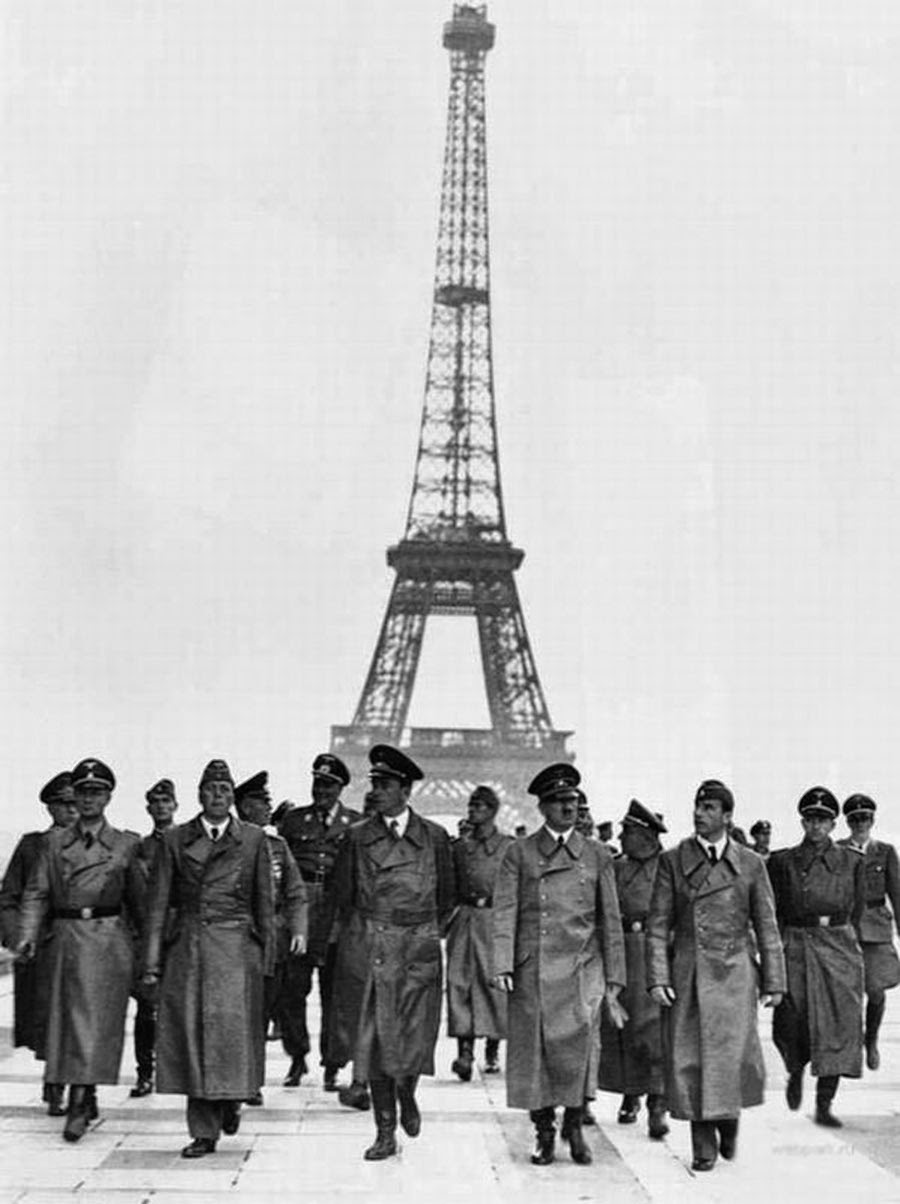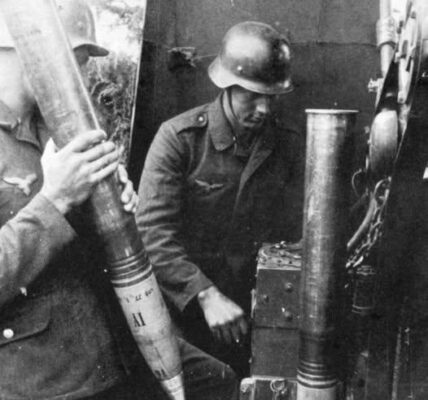.jpg)
Adolf Hitler and other German officials walk in front of the Eiffel Tower in Paris in 1940.
One day after the signing of the Armistice with Germany in June 1940, Adolf Hitler celebrated the German victory over France with a triumphant tour of Paris. Hitler’s view of his conquest with his various companions became one of the most famous photographs of the 1940s and World War II. It was his first and only visit to Paris.
In the early hours of June 23, Adolf Hitler, accompanied by his favorite architect and later Minister of Armaments, Albert Speer, and his favorite sculptor, Arno Breker, undertook a short tour of Paris.
The day before (June 22), France signed an armistice with Germany following the successful German invasion. Hitler’s tour included the Paris Opera, the Champs-Élysées, the Arc de Triomphe, and the Eiffel Tower. After visiting Napoleon’s tomb and the Sacré-Cœur, Hitler left Paris. In total, Hitler spent about three hours in the city.
His visit to Napoleon’s tomb was something special. “That was the greatest and most beautiful moment of my life,” he said as he bid farewell. As a tribute to the French emperor, Hitler ordered that the remains of Napoleon’s son be transported from Vienna and laid to rest next to his father.
He also ordered the destruction of two World War I monuments: one to General Charles Mangin, a French war hero, and one to Edith Cavell, a British nurse executed by a German firing squad for helping Allied soldiers escape from German-occupied Brussels.
Hitler was still raving about Paris months later. He was so impressed that he commissioned architect and friend Albert Speer to revive plans for a massive construction program for new public buildings in Berlin—an attempt to destroy Paris, not with bombs, but with outstanding architecture. “Wasn’t Paris beautiful?” Hitler asked Speer. “But Berlin must be even more beautiful. When we’re finished in Berlin, Paris will be nothing more than a shadow.”
.jpg)
Albert Speer’s memoirs about Hitler’s visit to Paris (from “Albert Speer: Inside The Third Reich ”):
Three days after the ceasefire began, we landed at Le Bourget airfield. It was early in the morning, around 5:30 a.m. Three large Mercedes limousines were already waiting.
Hitler sat, as usual, in the front seat next to the chauffeur, Breker and I sat on the folding seats behind him, while Gießler and the adjutants took the back seats.
To fit in with the military setting, we artists were provided with field-gray uniforms. We drove through the sprawling suburbs directly to the Opera, Charles Garnier’s magnificent neo-Baroque building. It was Hitler’s favorite building and the first thing he wanted to see.
After a final look at Paris, we drove quickly back to the airport. The sightseeing tour ended around 9:00 a.m. “It was my lifelong dream to see Paris.”
I can’t tell you how happy I am that this dream has come true today.” For a moment, I felt something like pity for him: three hours in Paris, the only time he had ever seen the city, made him happy when he was at the height of his triumph.
During the trip, Hitler raised the question of a victory parade in Paris. However, after consulting with his adjutants and Colonel Speidel, he decided against it. Officially, he justified the cancellation with the danger of British air raids. Later, however, he said: “I have no desire for a victory parade. We’re not finished yet.”

Adolf Hitler visits Paris with the architect Albert Speer (left) and the artist Arno Breker (right), June 23, 1940.





